Resources
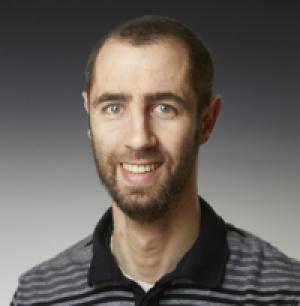
What’s a Catholic College? I grew up agnostic and converted to Islam when I was eighteen. A lifetime later, I now teach at a Catholic, Jesuit, liberal arts college. Like many religious studies educators, I continue to mull over questions about the intersections of identity, metaphysics, and socio-politics. So, when I began working at Le Moyne College, I wondered what kinds of encounters with religion my new position would have in store. I was especially curious because before coming to Le Moyne, I had taught only at state institutions (in California and Tennessee). Since joining the faculty at Le Moyne, I have engaged in a number of on- and off-campus mission-related programs, and these programs have raised a number of questions for me about what it means to teach where I teach: What is Catholic education? What is Jesuit education? To what extent can non-adherents of a tradition teach or study within an institutional context that espouses a particular tradition? My experience has shown me that by deepening my engagement with the Jesuit mission of the college I am better able to serve my students, and even better understand my own location in the pluralistic landscape of higher education. As Amir Hussain (Loyola University, Marymount), former editor of the Journal of the American Academy of Religion (JAAR) and current faculty member at a Jesuit institution writes in his “Editor’s Note” for the JAAR in 2011: “I wonder what the members of the National Association of Bible Instructors (the forerunner of the AAR) would have thought of their journal one day being edited by a Canadian Muslim scholar of Islam teaching at a Catholic university.” I appreciate Hussain’s playful gesture here because it underscores how intermingled religious studies pedagogy can be. That his self-conscious reflection on the context of religious and national pluralism makes its way into the flagship journal of the field is a positive sign for me, especially in a world of growing Islamophobia. As someone who studies and teaches about a particular religious tradition (Islam), I acknowledge the value of assigning categories, but this has its limitations and one’s religious identity is frequently a poor indicator of what people actually believe. (I write more on this in “Muslim in the Classroom: Pedagogical Reflections on Disclosing Religious Identity,” published in Teaching Theology and Religion [2016].) To illustrate this, I often invite my students to dig deep by asking ten Catholics to describe what their traditions mean to them, or to describe Who or What God is. Will they find ten different answers? I think so. As I’ve tried to figure out what Catholic education means to people, I too have encountered a range of voices. Engaging the Jesuit Mission Because my undergraduate and Ph.D. programs were both at state schools, I didn’t know to what extent I might engage Jesuit-related professional development opportunities at Le Moyne; I had no context to compare. Fortunately, I’ve been encouraged by the impact of mission-related workshops, conferences, and study groups on my intellectual development as a teacher, scholar, and citizen. In the broadest sense, teaching as a Muslim at a Catholic college reminds me of the importance of interreligious encounters and helps me, I hope, model and live the kinds of interreligious encounters that I encourage for my students. Conferences like “Collegium”—an annual weeklong colloquy on Catholic higher education—and “Islam at Jesuit Colleges and Universities,” at the University of San Francisco in 2015, have offered me a window into live questions and challenges that diverse educators at Catholic institutions face. I have the opportunity to reflect further on the topic at an upcoming conference at Seattle University, where I’ll participate in a panel entitled “Islam at Jesuit Institutions: Inter-religious Dialogue, Social Justice, and Campus Life.” Despite my own positive experiences encountering and engaging Jesuit education on and off campus, challenges of language and stereotypes still pervade the minds of students as well as faculty; think, for example, about the debates on the relationship of religious studies to theology. My department offers religious studies as well as theology courses, so my attention to these debates has heightened in many ways. To illustrate the disparities in thinking about religiously affiliated institutions, let me conclude this blog post with two brief anecdotes—one about faculty and one about students. Confusing Categories Faculty story: A job candidate for a position at Le Moyne once expressed to me that the school attracted her because it was “faith-based.” As I learned more about what she meant, it became clear that the candidate did not fully understand the context of Jesuit education or the particular institution at which she sought employment. It would be untrue to say that Jesuit education didn’t have a “faith-based” component, but looking around the United States, for example, what this component means to Jesuit schools and their faculty, broadly speaking, is quite different than what it means for, say, Liberty University or any number of “faith-based” institutions. Regarding my argument about religious identity as a poor indicator of, well, a lot of things, I think this becomes straightforward when one examines the range of “faith-based” institutions across the country. (She didn’t get the job.) Student story: A linguistic trope that I often press my students to explain is when they refer to someone as “super-Catholic.” Many of my students, apparently, have a “super-Catholic” member of their family. “Is what you mean,” I try to gently provoke them, “that your uncle is kind of obnoxious and not too interested in learning about diverse opinions?” Although students may not have this blunt characterization in mind when explaining their family member, they often agree with my interpretation. I’ll follow up: “Well, what about your Jesuit professors at Le Moyne—who spent over a decade training to enter the order? Do you consider them super-Catholic?” (If anyone connected to the Le Moyne community is super-Catholic, I should think it would be the Jesuits.) At this point, I suspect I succeed in slightly confusing students and problematizing the imprecision of “super-Catholic” code language. Indeed the institutional context aids me here in guiding students through a teachable moment about word choice and the assumptions we hold about various traditions. Making Context work for Students To help students understand the mission of their institution, I incorporate Le Moyne’s mission statement into some course assignments to invite student reflection on the raison d’etre of their liberal arts experience. Unsurprisingly, I encounter a range of responses. Some students, for example, don’t know that Jesuit means Catholic. At the other end of awareness, a Catholic religious studies major once shared something very perceptive with me: It’s easy to be a student at Le Moyne and pretty much ignore its Catholic-ness, but at the same time it’s also easy to engage with that part of the school if you choose to go that route. To further help my students reflect on institutional context and best appreciate the purpose behind their required courses (all Le Moyne students must take any religious studies class as part of the core curriculum), I briefly share at the beginning of the semester that I’m a convert, but that our course will ask us—professor included—to approach material from a position of epoche (suspension or bracketing of personal convictions). I find that flagging my positionality (while leaving its particulars undefined) as well as our methodological approach signals to my students that no one is out to convert them. (Although if I were out to convert them, wouldn’t it be odd that a Catholic hired someone to convert its students to Islam? What would that even mean—theologically, logistically?) Although I rarely make reference to my own Muslim identity after the first week of class, my courses on Islam focus on issues of race and privilege, so I know my students cannot escape the fact that their teacher is a white convert. As one student recently wrote in an anonymous feedback activity, “When I tell my sisters I have a White professor for this class, they are mind blown.” In conclusion, I consistently find that my typical 18-22-year-olds students appreciate the vibe of the institution, but they’re not necessarily convinced it’s because of its Jesuit Catholic heritage—even if I’m convinced that the institution’s affiliation affects students more than they might suspect. I also find that students tend to appreciate that a Catholic institution would offer classes about all sorts of different religions (as Le Moyne does). For many reasons, including a curriculum that values courses on Islam, I—and I think most of my students as well—consider Le Moyne a super Catholic college. Perhaps even a super-Catholic college.
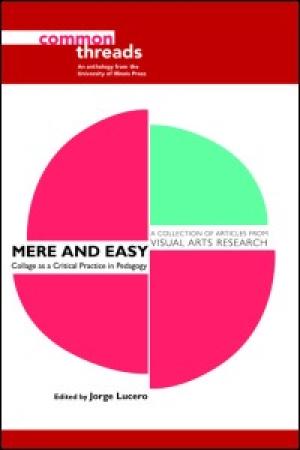
Author Jorge Lucero uses the term collage as a descriptor of a particular art form and also as a metaphor for juxtaposed ideas and themes in his edited collection of articles. Assessing collage compositions in general as stale and conventional, Lucero asks what would make collage a challenging and invigorating form for pedagogy and scholarship and attempts to model one way in his collection of essays. Collage is a form that uses what one can access in printed images, photographic images, and digital images. One can assemble collages online or by using any of a multiplicity of surfaces and means of attachment. Lucero describes the collage-making process as deceptively easy and seemingly simple. Yet these qualities of “mereness and ease” (6) can enable two seemingly non-related images to create transformative possibilities of a third thing that was hitherto non-existent but is engendered by the creative or cognitive dissonance of a juxtaposition that is non-linear and non-complementary. This edited volume on collage includes a variety of practical and theoretical papers that become an intentional collage of ideas. Lucero describes his choice and arrangement of disparate paper topics as a way to make this volume “a collage in and of itself” (7). This reviewer found it difficult to resonate or discover meaning in the choice and sequence of articles. Nonetheless, Lucero’s attempt to create a collage of scholarship intended to inspire readers to create a “new sort of some thing” (7) is unique and thrilling. Among the gems in this book is the chapter by Grauer who conceives of teenagers’ bedrooms as collages illustrating their evolving identity. Describing a bedroom as a canvas on which can be displayed a young person’s “unique artifacts and symbols” (25), Grauer highlights the importance of paying attention to how teens’ rooms offer images to reflect upon, experiment with, explore, and create one’s own identity. Guyas and Keys relate how an art installation of written scholarly work displayed in a public interactive space can be fertile ground for personal and professional growth. The content and process of the author’s dissertations were displayed in a gallery by hanging individual pages from the ceiling. Art work by the authors was placed on the walls alongside narrative interpretations of the process of art-making. Gallery visitors were asked to record responses or thoughts that occurred as they looked at juxtaposed materials and post their responses on the walls. “The gallery merged from an exhibition/installation into an open studio as visitors added to the evolving collage” (32). Lucero includes a qualitative study by Stevenson and Duncum of early childhood development. Observing children drawing and then recording the children’s verbal reflections on their collage, the researchers concluded that abstract symbolization through images develops as early as age three. Engaging the children in reflective dialogue is noted as one way to aid three to five year olds in the development of symbolic representations and understanding. Among the articles included in this compendium are a reflection on Freudian analysis of symbol use in the Little Hans case, an examination of the metaphorical cloning of images, and a verbal collage whose narrative and dialogue overlap but are not clearly related. Lucero’s collection stretches the reader creatively and uncomfortably to find non-linear and unique connections between disparate articles. Its most useful audience is art educators and art students, although other educators will find several selections to be intriguing and useful in non-art fields.
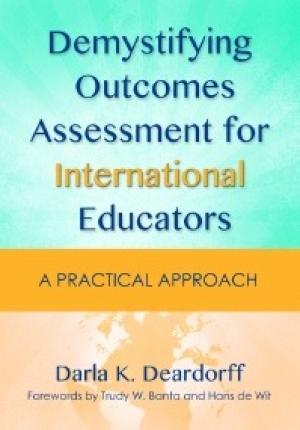
Few words strike fear in the hearts of post-secondary teachers more than “assessment.” Most faculty in undergraduate and graduate-level education are better-versed in their own specializations than they are in the more administrative aspects of their schools. Assessment often feels like one of those top-down assignments that faculty must add to their workload in order to get ready for the next accreditation visit. Darla K. Deardorff provides relief from this fear by removing the mystery from the process of assessment. She places it within the healthy context of enabling teachers to see if their work is actually accomplishing what they intend for it to accomplish, and, on a broader scale, if the overall mission of the institution is being achieved. Deardorff takes time to define all of the technical terms so that even those who feel like novices in this domain understand the issues, making it an easy read. The second half of the book is comprised entirely of appendices, full of succinct guidelines on how to create and implement an assessment plan along with examples of tools and processes used at various schools. The book begins in an engaging manner by using several myths regarding assessment as a foil to make a case for the importance of doing assessment well. The second chapter then looks at thirty frequently asked questions about assessment. Once the reader finishes the first two chapters, he or she is prepared to find out more about the distinctive aspects of international education and learn what goes into creating an effective assessment program – from start, through implementation, and finally to evaluation and revision. Most of this book would serve as a practical guide for anyone involved in educational assessment, but Deardorff relates the book most specifically to those engaged in international education, by which she means “efforts that address the integration of international, intercultural, or global dimensions into education” (29). This includes schools with study abroad programs, those with a strong international student or faculty presence on campus, or even those that are actively engaged in preparing students to work in other cultures or simply be better global citizens. This adds a level of complexity to the assessment process that traditional models of assessment have not addressed. While many books on assessment are geared more toward institutional assessment in comparison with other institutions or benchmarks, Deardorff is focused on student learning outcomes and how one knows whether or not they are being achieved. Special attention is given to whether or not methods of measuring these outcomes are both valid and accurate. There is no one-size-fits-all approach to this kind of assessment, but the processes outlined in the book should help any institution create an assessment plan that is both feasible and useful. While it is vital that faculty be heavily involved in this process, a good assessment plan will involve multiple stakeholders, will be integrated into the ongoing program of the school, will make use of both indirect and direct methods of feedback, and will make use of well-planned rubrics.
Travel Information for Participants Already Accepted into the WorkshopGround Transportation: About a week prior to your travel you will receive an email from Beth Reffett (reffettb@wabash.edu) with airport shuttle information. This email includes the cell phone number of your driver, where to meet, and fellow participants with arrival times. Please print off these instructions and carry them with you.
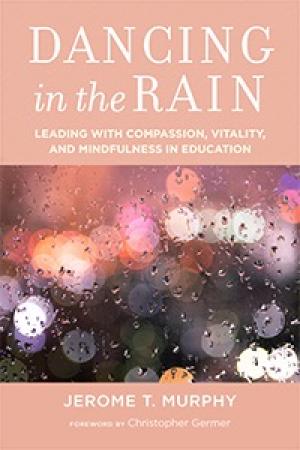
Former dean of the Harvard Graduate School of Education, Jerome Murphy writes as a seasoned educator about how to best care for yourself as a teacher in the midst of daily stress. This book applies to the stress of academia as well as ministry. It is a book I would recommend to students preparing to teach and to serve in ministerial vocations. Murphy highlights the source of stress that afflicts educators: our own responses to stress. When difficult situations arise, we tend to respond in one of three self-defeating ways: ruminating on the negative, rebuking ourselves, or resisting our emotions. Murphy draws from the literature on mindfulness to point out the health benefits of becoming aware of our emotions in the moment and accepting our shortcomings. As an alternative to the cycles of rumination, rebuke, and resistance, Murphy offers a list of instructions that help educators focus on their own values, summarized by the acronym “MY DANCE.” Each letter represents a phrase discussed in the following chapters. “Minding your values” advocates understanding our own life goals and naming our best version of ourselves. Knowing who we want to be helps us evaluate whether our actions are in line with our values. The next chapter, “Yield to now,” captures the importance of in-the-moment mindfulness, trying to stay present to ourselves and others, and includes exercises for practicing mindfulness. “Disentangle from upsets” also highlights the role of mindfulness in preventing us from being consumed by our stress. The chapter titled “Allow unease” instructs readers to attend to the discomfort of negative feelings. “Nourish yourself” emphasizes intentional self-care and practices of gratitude, while “Cherish self-compassion” takes self-care to a deeper level. The last element of the acronym is “Express Feelings Wisely.” In each of these chapters, Murphy brings in personal anecdotes from years of administration and leading workshops for teachers and school principals. He intersperses these lessons with some of his own personal struggles, such as his wife’s diagnosis with Alzheimer’s disease. In these glimpses of personal sharing, the reader gets a sense of how these practices of self-care have been imperative for someone who has transitioned from being a dean of a Harvard graduate school to a full-time caregiver for his wife of nearly fifty years as she slowly loses her ability to recognize him. This book draws our attention to the humanity of all educators: we are not simply vessels of information or mediums of higher learning. Each person has his or her own struggles in living daily life, on top of the demands of our teaching vocations. Attending lovingly to our limitations and caring for ourselves in the midst of these struggles is crucial if we are to be effective as teachers and healthy individuals. I recommend this book to anyone who wants to learn how to better care for themselves in the midst of life’s demands.
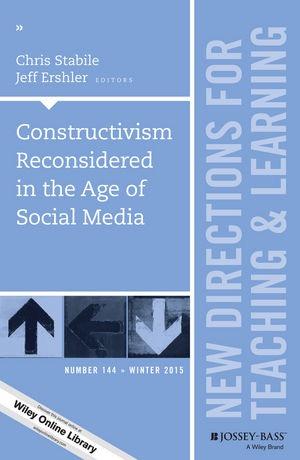
I was recently talking with my former doctoral advisor about a new position I accepted with the university where I teach. His seminary is exploring innovative ways of delivering courses, and I wanted his counsel as I investigate moving my programs completely online. As we were talking, he simply said, “The educational landscape has changed, and we must change with it if we are to survive.” This is something that I am fully aware of and advocate for. However it meant something more profound coming from someone who I respect, someone who has been at the forefront of practical ministry education and yet often concedes that keeping up today is more difficult than ever. It is time to change. And not just our feelings on distance or online education, for that is now simply a question of location. Education occurs in the classroom, and that classroom may be in a traditional face-to-face format or an online format or both. In short, distance or online education is here to stay. The challenge that is before us remains a consistent two-fold challenge: what content will we deliver, and how will we deliver that content. This two-fold challenge is both a matter of content and context (or community). It is because of this essential nature of education that constructivism has maintained such a central theory of education. Originally devised as an educational theory by John Dewey and provided a psychological foundation by Jean Piaget, constructivism is a process where a learner constructs meaning based on their subjective perception of objective reality. Briefly stated, constructivism is an active process where learners construct meaning together in a learning community through their shared experience rather than simply receiving processed information from an expert. Content is gauged against the individual and shared experiences of the learning community as meaning is generated out of conversation, collaboration, conflict, and consensus. All of this is essential to understanding the profound nature of this short collection of essays which is the focus of this review . Stabile and Ershler, the editors, have gathered together a team of educational constructivists to assess the theory’s continued validity in this social media era. By their own admission, “Social media is constructivist” because it “embodies constructivism itself as the users engage in the development of their own meaning” (1). While this volume tackles the enormous complexity that is the digital village, the technical use of social media is not the focus here. It is assumed that faculty are tweeting, instagramming, snapping, and pinning along with their students (or, at least, are aware that this is how people communicate today). No, the focus is on whether constructivism remains a viable option for engaging the learning process. Each of the authors seems to give a shared assent, then, to two assertions: (1) the social media era is inherently invested in crafting meaning through the shared experience of community engagement; therefore (2) constructivism remains a (if not the) viable learning theory because of its focus on crafting meaning through shared experience of community engagement. If we who teach undergraduate, graduate, doctoral, and post-doctoral students are going to remain relevant, then we must no longer see ourselves as experts who disseminate information to our paying customers. We must see ourselves as conversation partners, community facilitators, and wise mentors. We must begin constructing the classroom around a workable theory that respects our current digital age. Thankfully, for those who are unfamiliar with learning theories, Stabile and Ershler offer a timely and thoughtful collection of essays to introduce the reader to an essential theory that is still as useful today, if not more so due to the connectivity of the social media age, as it was when crafted nearly a century ago.
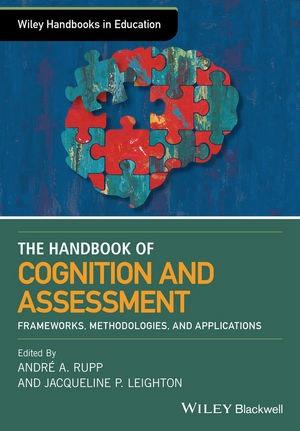
This is a book for assessment professionals; it is the rare teacher in higher education who would be able or willing to get this deep into the weeds of higher education assessment design and deployment. Many of the fifty-two authors contributing to this volume are affiliated with the Educational Testing Service and most seem to be practitioners of assessment for corporations or academic institutions. As the foreword clearly states, the authors are a mix of psychometricians and cognitive psychologists “bringing measurement science into real-world practice” (xx). The book is geared to a multidisciplinary audience, including “educational measurement researchers,” “assessment development practitioners,” and graduate students interested in the measurement of cognition. It is not suitable for classroom teachers interested in exploring course or program assessment. The greatest value of this volume for the average faculty member at any type of institution will be to provide a lens through which to view the many requests from higher administration to comply with particular types of assessment practices. The first part of the book, which comprises ten chapters, covers frameworks for assessment, and several of the earlier articles in this section are general enough to provide useful insight into assessment protocols. Most of the other two sections, focusing on Methodologies (six chapters) and Applications (seven chapters), are so detailed and technical as to be inaccessible to non-professionals in the field of assessment. A few articles stand apart from this: “Assessing and Supporting Hard-to-Measure Constructs in Video Games” by Valerie Shute and Lubin Wang, and “Conversation-Based Assessment” by G. Tanner Jackson and Diego Zapata-Rivera – both provide interesting alternative visions for approaching assessment and offer promising departures from the typical standardized written assessment. This volume is full of cutting-edge research on cognition and assessment couched in language inaccessible to those outside the field. The brief “Final Words” section contains a plea that classroom faculty should note: “in order for the work in this Handbook to have the best chance of finding its way into practice, we need to be ambassadors of this research while understanding that it will require time, patience, and functional prototypes to persuade clients and users to believe the scientific and social evidence” (586). This is not the entry-level volume that will allow faculty to help as ambassadors of this sort. This anthology will be of interest primarily to those whose professional focus for research or practice is cognition and assessment in education.

Foundations of Adult and Continuing Education lays a foundation of the history, theory, research, policy, and practice of the amorphous expanse known in North America as adult and continuing education. Undoubtedly constructed as a resource for graduate students in the burgeoning field, this text lucidly summarizes complex and daunting theory without stripping the data of interest and nuance. That is high praise for what could have easily been just another bulky textbook. Constructed of twelve chapters, divided into three sections, this work defines contemporary perspectives of the field, examines the foundations of the field, and focuses on the contexts of adult and continuing education (ix). The text gives a cursory summary of the historical rivalry between terms vying for lexical dominance of the then nascent field and while “there is still not a universally accepted definition today” one can trace certain themes and trends among the most noted definitions (3). The text presents different forms, purposes, and providers of adult education and even addresses the social forces affecting the expansion of the field (technological innovation, globalization and the global market, as well as seismic demographic shifts associated with rising levels of educational attainment, aging populations, and an increase in racial and ethnic diversity) (11-20). It outlines the prevailing historical patterns in adult participation and addresses some of the challenges that adult learners face, such as long waiting lists for ESL programs, limited formal educational background (especially among seniors [42-43]), the often-ignored relationship between social class and participation, as well as the influence race and ethnicity have on participation rates within adult education programs. Perhaps the most harrowing statistics are those involving unemployed and underemployed adults and the working poor. Foundations references the US Census of 2012 when reporting that 10.6 million Americans are among the working poor (59). According to this research, “women are twice as likely as men to be part of the working poor” and Hispanics and Blacks are “twice as likely as Whites and Asians to be among the working poor” (59). Educational attainment and working poor status appear to be linked as the U.S. Bureau of Labor Statics in 2012 reported that while only 2.1 percent of college graduates were categorized as working poor, “21.2 percent of those who had less than a high school diploma” (60) were categorized as such. Another startling revelation is related to the identity of adult educators. Identifying the boundaries of adult and continuing education (ACE) as a field is complex and requires educators to define not just education but also adulthood (“a relatively new social construct in American society” explored in greater depth in chapter 7), and to work in a field awash in acronyms and associations. They must try to construct a sense of professional identity in a field which necessarily works within structures of power and simultaneously challenges those structures (108, 117). Readers might be surprised by the inclusion of a chapter on philosophy in a text summarizing the history and vital components of what is commonly described as a predominately applied field. However, the inclusion of such is quite necessary considering that it is paramount to investigate “many ways of thinking” and the frameworks we use “for thinking about broader issues and social problems” (137). In fact, the authors describe philosophy in those exact terms. Coming from a religious studies background and being something of a theory-head, I found this chapter particularly engaging. It touches on everything from belief to Postmodernism and Critical Race Theory (CRT) and brilliantly illustrates the implications of such theory for the practice of education in general. The chapter, “Historical Perspective: Contexts and Contours,” is equally compelling because of its willingness to question the value of history for the field and investigate this history via its diffusion, “the spreading of ideas through newspapers, lectures, and academic and popular writing” (177). American history is intimately tied up with education and literacy: literacy and education took center stage during era of Reconstruction, illiteracy was viewed as a hindrance to the effort of the World Wars, and today, education and assimilation are still closely linked (191-192). Learning about the limited role the federal government is allowed, constitutionally, to play in the realm of adult education (as explicated in chapter 8) is eye-opening. The few times the federal government has stepped into the realm of adult education has had to do with immediate national interest (adult literacy, English language learning, literacy for military, and even job training for women working in production to strengthen the war effort of WW II) (264-267). The chapter “Technology and Adult Learning” could be a separate book itself. The protean nature of new technologies, the effect of technology on neural cognitive activities, and the dire need to develop “critical evaluative skills” in adults as well as in children in the age of the Internet are expertly addressed here (314). The two chapters dedicated to the expansive landscape of adult education map the varied spaces and contexts in which adult education takes place. While one chapter focuses on adult education within more formal contexts (within work, where adult education overlaps with the territory of higher education, inside programs of basic education and ESL learning, and military efforts), the other traces the outline of adult education as it occurs within a community context (faith-based programs, adult learning within museums and libraries, wellness programs, and civic engagement groups – especially those rooted in social justice). These two chapters spotlight just how diverse in topic, motivation, and method adult education can be. For newcomers to adult education like myself, the crisp explication of the regions and modes of what constitutes the field is exceptionally enlightening, as I have previously found it difficult to isolate what in fact constitutes, and does not constitute, adult education. While noticeably constructed with Education graduate students in mind, this book has something to teach anyone even tangentially interested in lifelong learning, community building, education, employment, and the effects of technology on North American culture. As an academic advisor working within the halls of higher education and a lifelong learner myself, I see this text as a great resource for graduate students and educators in all disciplines but I also recommend it to those invested in education and learning outside the confines of formal educational structures (church leaders, community organizers, volunteers, and policy advocates).
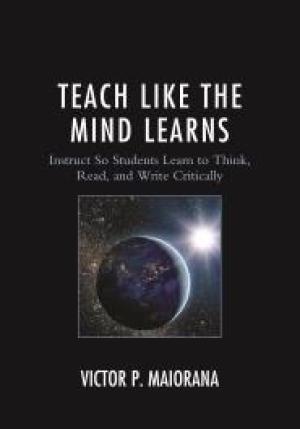
This volume is the most recent of a triumvirate of interrelated works Maiorana has recently published. Teach Like the Mind Learns builds off Fixing Instruction: Resolving Major Issues with a Core Body of Critical Knowledge for Critical Instruction (2015) and Preparation for Critical Instruction: How to Explain Subject Matter While Teaching All Learners to Think, Read, and Write Critically (2016). Maiorana’s larger project is an ambitious one. He takes aim, with broad brushstrokes, at rote-learning styles of instruction, a specter he calls “serialism” and describes as the “teaching profession’s weak default instructional strategy” (4). He contends that this pervasive style inhibits “our innate ability to think critically” (155). As an antidote, Maiorana offers his own unique instructional framework. He argues that subject matter is universal and critical in nature across disciplines. He also argues that one can teach how the mind learns, and as a result, promote teaching that gets students to write, speak, and observe critically. One can do this by utilizing “mind grammar,” which he defines as the “innate, systematic, and patterned way that the human mind encounters the world and all its subject matter” (6), At the core of mind grammar instructional techniques are what he calls “subject matter displays.” Much of the practical approach involves formal concept mapping and displaying the explanation of a certain term or concept with related activities. The book unfolds in two main parts: part one provides an overview of Maiorana’s theoretical basis for critical instruction, and part two offers numerous examples of activities and instruction sets using this framework. Teach Like the Mind Learns is a tough nut to crack. This is largely because it is a closed intellectual loop. The only other instructional literature Maiorana cites in footnotes and references in passing are his own two earlier works on the topic. He even instructs the reader to purchase his previous books so one can better follow the self-referential citations that abound in each chapter. The first-time reader must further master Maiorana’a distinctive vocabulary, from mind grammar to “Itechniques” and “Imethods.” Consequently, the learning curve for reading Teach Like the Mind Learns is steep. It is largely predicated on the assumption that the reader has read and embraced Maiorana's earlier works. There are some helpful insights throughout, including the example teaching exercises that make up the second half of the book. But as Maiorana’s approach avoids engaging with any other instructional literature beyond his own, it is ultimately not clear how one might use this approach in combination with other pedagogical styles and resources to improve classroom instruction. Further, he suggests a remarkable universality to his framework, regardless of specific context – from elementary through college-level instruction – a bold one-size-fits-all approach. In a world of opportunity costs, limited time, and limited energy, someone looking to explore “how the mind learns” would be much better off diving into the established science of learning literature. There are numerous accessible works on its foundations and praxis, and several that are specifically about improving instruction at the college level, such as James Lang’s Small Teaching (San Francisco: Jossey-Bass, 2016) and Donelson Forsyth’s College Teaching (Washington, D.C.: American Psychological Association, 2016).

Over the past several weeks, we have seen over and over again violence against people, mostly women of color, presumed to be Muslim. The attackers have been white men who targeted their victims based on the victim’s presumed religion. Some of the increase in these hate crimes can be attributed to a rise in anti-Muslim rhetoric from political leaders which emboldens those with xenophobic views to be more public. However, the lack of a large public outcry against such crimes comes from long held racist assumptions rooted in Orientalism about Muslims which are reinforced by the media, popular culture, government narratives, and, too often, by some non-Muslim religious narratives. The question for any religious studies teacher in these times has to be: what can I do to help counter these assumptions, attitudes, and false narratives? Taking such a question seriously is not without risk, but teaching about religion is not a politically neutral endeavor. Talking about religion, teaching about religion, is political. My entire teaching career has been motivated by how narratives create our reality. This is not something new. After all, bell hooks, Edward Said, Stuart Hall, Paul Ricoeur, Judith Plaskow, Dwight Hopkins, Sheila Davaney, and many, many others have pressed for decades about representation and the creation of narratives. However, in our current cultural and political climate I often find myself pausing to consider the narrative, or better, the counter-narrative that needs to be told. Our assumptions about other people are shaped by the information we possess. In many instances, the information we possess is limited at best and ill-informed at worst. This understanding informs how I think about teaching religion. When teaching my “Introduction to Religious Studies” classes I have two goals in mind. First, I want to raise the students’ awareness of the relationships between religion and politics. Religious language is used to justify violence by non-state groups who claim religious identities. Religious language is also used to justify laws and policies about abortion, the death penalty, military strikes, violence, human rights, women’s rights, LBGTQ rights, etc., etc. Second, I hope to raise the level of students’ religious literacy. If our assumptions about other people are shaped by our knowledge, then introducing students to the commonly held beliefs and narratives of various religious communities should result in students having a better understanding about others. When I teach religious studies courses I use a human centered approach. As often as possible, I try to expose students to different practitioners within and among religious traditions. The challenge is always finding the balance between giving students general information about religious beliefs without generalizing and essentializing an entire tradition based on the beliefs of individual practitioners. The larger point is to humanize religious beliefs and practices. When students hear the stories of others, students find ways to connect with folks on a human level. Making a human connection then allows for a different kind of conversation about the interplay between religion and politics. The stereotypes and ill-informed assumptions start to be replaced by new knowledge. As students begin to think differently about human beings and the practices of religion, they also begin to ask critical questions. One of the questions students often ask is about the media’s and popular culture’s engagement with religion. Many students notice that religion is mostly presented as conservative, damaging, and/or violent with very little attention given to religious people who are working to create positive social change rooted in justice. It is during these moments that I am able to introduce to students groups and individuals who might be labeled “prophetic activists.” The idea of prophetic activism is as old as religion itself, but the term as I am using it comes from Helene Slessarev-Jamir. Slessarey-Jamir defines prophetic activism as “religion [that] is being used to frame progressive politics that prophetically calls for justice, peace, and the healing of the world.”[1] Some of the groups I tend to introduce in class include: Jewish Voices for Peace, SpiritHouse Project, Christian Peacemaker Teams, Muslim Advocates, and Four Winds American Indian Council. For example, Jewish Voices for Peace has consistently spoken out against anti-Muslim hate, be it a Chanukah ceremony to overcome racism and Islamaphobia or showing up at airport protest against the “Muslim Travel Ban.” It is prophetic activist groups such as Jewish Voices for Peace that help provide a counter-narrative of justice and nonviolent social change rooted in religion. I started out asking how religious studies teachers can help counter the racist and xenophobic assumptions, attitudes, and narratives that lead to violence and/or silence. My suggestions include a human-centered approach to teaching religion, to make the connections between religion and politics overt, and to provide counter-narratives that are rooted in justice and nonviolent social change. Most importantly, I think it is up to those of us who teach about religion to provide opportunities to change, confront assumptions, and to call out violence done in the name of religion or because of religion. [1] Helene Slessarev-Jamir, Prophetic Activism: Progressive Religious Justice Movements in Contemporary America (New York: New York University Press, 2011), 4.
Wabash Center Staff Contact
Sarah Farmer, Ph.D
Associate Director
Wabash Center
farmers@wabash.edu